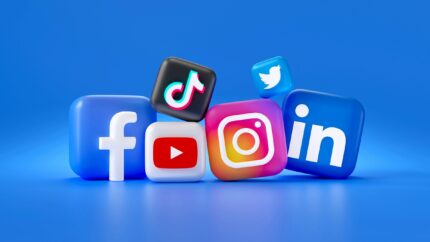In today’s digital world, social media is more than just a tool for staying connected with friends and family—it has become one of the most powerful engines shaping global culture. From viral memes and challenges to online trends that influence fashion, language, and even politics, social media platforms like TikTok, Instagram, Twitter (X), Facebook, and YouTube have created a new ecosystem where internet culture thrives and spreads at lightning speed.
The Birth of a Shared Online Language
One of the most fascinating aspects of internet culture is the way it has created a shared “digital language.” Slang, emojis, GIFs, and memes often originate from niche online communities but quickly become mainstream thanks to social media. A phrase that starts in a small subreddit or a short TikTok clip can reach millions within hours, blurring the line between online and offline communication. For instance, phrases like “spill the tea” or “it’s giving” were once limited to specific communities but are now widely used in everyday conversations.
This shared language helps build a sense of community among internet users, even across geographical and cultural divides. Social media allows people from different backgrounds to not only consume content but also remix, adapt, and contribute to it, making internet culture highly participatory.
Memes: The Currency of Internet Culture
If there is one element that defines internet culture, it’s the meme. Memes are cultural shorthand—quick, humorous, and often layered with social commentary. Social media platforms act as the perfect breeding ground for memes, where users can instantly share, replicate, and transform them. A single meme can spark thousands of variations, reflecting local humor, political climates, or global events.
Take the rise of viral formats like the “Distracted Boyfriend” meme or the countless TikTok sound trends. These digital artifacts not only entertain but also become cultural markers of a specific moment in time. Without social media’s amplification power, these memes would remain isolated jokes instead of global phenomena.
The Influence of Virality
Virality is a defining characteristic of internet culture, and social media algorithms play a crucial role in fueling it. Platforms prioritize engaging, shareable content, which often means that the funniest, most relatable, or most shocking pieces of internet culture get boosted to millions of users. What used to take years to filter through traditional media channels can now become a worldwide trend overnight.
Challenges like the Ice Bucket Challenge or dance trends like “The Renegade” on TikTok highlight how social media can turn a simple idea into a global movement. Some trends raise awareness for causes, while others remain purely for entertainment. Regardless of intent, virality ensures that internet culture is constantly evolving and spreading.
Bridging Generations and Communities
Another remarkable role of social media is how it democratizes cultural participation. Previously, cultural trends were shaped by celebrities, media companies, and advertisers. Today, anyone with a smartphone can contribute. A teenager in one country can create a trend that resonates globally, while subcultures once hidden from mainstream view now flourish in online spaces.
This democratization has also led to the blending of different cultural influences. Fashion trends, music genres, and even political ideologies travel across borders at unprecedented speed. Social media helps preserve cultural uniqueness while allowing cross-cultural exchange, creating a dynamic, hybrid internet culture.
The Double-Edged Sword of Online Culture
Of course, the spread of internet culture through social media is not without its downsides. The same algorithms that promote inclusivity and creativity can also amplify harmful content, misinformation, or toxic behavior. Memes and trends can sometimes trivialize serious issues, while the rapid pace of virality makes it difficult to separate credible information from noise.
Moreover, internet culture’s fast-changing nature can make participation feel overwhelming. What’s popular one week can be outdated the next, creating pressure to constantly stay updated. For younger generations especially, this can fuel anxiety and fear of missing out (FOMO).
Conclusion
Social media has become the lifeblood of internet culture, serving as both a stage and amplifier for the ideas, humor, and creativity of millions of people worldwide. It turns niche jokes into shared experiences, local trends into global phenomena, and everyday users into cultural creators. While it brings both challenges and opportunities, one thing is certain: internet culture as we know it could not exist without the reach, speed, and interactivity of social media.
As our digital world continues to expand, the role of social media in spreading internet culture will only grow stronger—shaping not just how we communicate online, but how we experience culture itself in the 21st century.

